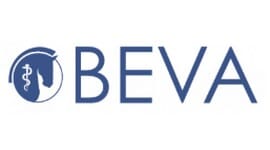
The British Equine Veterinary Association (BEVA) has developed a substantial platform to deliver quality CPD cost-effectively, but the art of keeping it relevant and attractive to both BEVA members and non-members lies with our openness to evolve to best meet changing needs.
BEVA Congress – how it has changed
BEVA was established in the 1960s and quickly developed a strong raison d’être in providing learning opportunities for its membership. The annual congress soon became an important component of this and moved between various conference centres or academic institutions over the years. It settled for a few years at the Harrogate Conference Centre before it outgrew that, and we now hold our conferences at substantial centres in either Birmingham or Liverpool.
BEVA’s annual congress has been very successful at remaining relevant for equine vets and its membership continues to grow; we now have more than 4,000 members – close to 3,000 “ordinary” members who are full-time vets or nurses, over 1,000 student members who get free membership as a strategy to encourage more new graduates into our profession, and an increasing contingent of overseas members on our affiliated programme (Figure 1).
As vets, we generally have a lifelong interest in our field, and so there is an enthusiasm among our members to regularly engage in CPD, which also ensures our profession stays up to date and delivers the best care. To this end, BEVA quickly established the Equine Veterinary Journal (EVJ) in 1968 to help drive and disseminate equine research knowledge, and this was complemented in 1989 with a second journal, Equine Veterinary Education, which published information that was more relevant to the equine practitioner. The latter continues to be the most popular journal for equine clinicians and has “crossed the pond” to also have a US version.

And how it’s going
There has been a seismic shift in the journal delivery recently, with an initiative to promote sustainability and transition to digital delivery
There has been a significant shift in journal delivery recently, with an initiative to promote sustainability and transition to digital delivery. The other change that has happened across all scientific journals is the shift towards open access. For those of you unaware of what this means, this is a different funding model with the authors rather than the readers bearing the cost of publication. While favoured by many funding bodies as a way to increase dissemination, there have been concerns that the quality of the publications will be reduced. Certainly, there has been a marked expansion in the number of journals from which authors can choose. While this expansion, on the surface, appears to offer more choice for publication, it could have secondary effects in reducing the publication of clinical research, where publication costs have historically been absent. In addition, it could also reduce the number of submissions to the BEVA’s journals, which could reduce quality and, indeed, potentially threaten the survival of our journals.
Currently, the EVJ’s board has decided to stick with a hybrid position, with some open access articles and others going through the more traditional process. In my opinion, this is a wise decision, especially since BEVA’s journals are different from commercial journals in that they are primarily aimed at BEVA’s membership. Fortunately, submissions to BEVA’s journals are being maintained and thanks to the seemingly endless energy of our two chief editors, Dr Celia Marr and Dr Tim Mair, they continue to be well-regarded journals by the readership and internationally.
Changing modes of CPD delivery
However, the content and how we deliver other forms of CPD have evolved rapidly over the years, most notably since the COVID pandemic, when many more people became used to online delivery. This has offered a much more diverse way for members to learn, the main choices being between online and in-person. These choices are not mutually exclusive; combinations can be popular, such as the delivery of the knowledge component as a pre-recorded or live webinar and the practical component delivered in-person.
BEVA has been able to run up to 40 in-person courses per year, educating around 1,100 vets and nurses in-person last year

BEVA was concerned that post-COVID, when vets became used to undertaking their CPD requirements online, in-person courses would reduce in popularity. It has been pleasing to see that this has not been the case, and both our annual congress and in-person practical courses continue to be highly popular (Figure 2). Interestingly, the in-person courses score slightly higher than online in our post-course feedback (4.70 versus 4.35 out of 5), but the option for online education is still popular among a significant proportion of our membership.
Through the support provided by the BEVA office overseen by Dr Sarah Gasper, BEVA has been able to run up to 40 in-person courses per year, educating around 1,100 vets and nurses in-person last year, the majority of whom are BEVA members. These cover our extensive fundamentals courses for new graduates, as well as courses aimed at established and advanced practitioners. For our online activities, we had 1,700 live webinar attendees and about 1,000 attendees at the BEVA Congress (Figure 3).
What CPD is on offer?
As BEVA is a membership organisation, it tries to provide up-to-date CPD for its members that is relevant, practical and, most importantly, at a reasonable cost, which, as a non-profit-making organisation, it can do. Much of BEVA’s CPD does require payment to attend, but BEVA also provides more than 300 hours of online material for its members free of charge, including recorded webinars, quizzes and case scenarios, soundbites, and courses; as well as two free collections of regular online webinars. One of these is the “Clinical catch-up” series, where a popular topic is covered by one speaker in detail, and there is plenty of time for questions. The other is the “Transatlantic equine clinics”, which usually involve a panel of experts from both sides of the “pond” discussing a topic. This can lead to some engaging discussion on the different ways the same condition can be approached in different countries and remains very popular.

What’s coming up?
One of the most exciting recent developments for me has been the collaboration with the London International Horse Show
How is BEVA evolving its CPD activities? The Education Committee is frequently on the lookout for new topics for new, established and advanced practitioners. While the committee consists of Council members who “have their ear to the ground”, we are also happy to hear from vets about new suggestions for courses – although the programme is established two years ahead, so a new idea can take a while to “appear”!
One of the most exciting recent developments for me has been the collaboration with the London International Horse Show (LIHS – formerly known as “Olympia”), which now takes place just before Christmas every year. I have had the privilege of being a member of the veterinary team at the show for almost 20 years, and it is one of the high points of my year. It’s a great family-orientated event with top-level equestrian sport in a “feel-good” atmosphere. Due to the extensive facilities at the Excel, BEVA has developed a concept of combining CPD with the opportunity to see high-quality equestrian sport with or without the family at LIHS. It started in 2023, and numbers doubled for 2024, so we hope the growing trend will continue this coming year.
Not only are our developments based on new topics, but we are also interested in incorporating new technologies to make our CPD more engaging and effective. To this end, we are looking at subtitling our online material, not only for those who find it assists their learning, but also, via automated translation, to make it more usable by our expanding international affiliated membership programme. Within our in-person courses, we believe that maintaining the all-important practical component will require the development of relevant and realistic models to minimise reliance on live animals, which is becoming increasingly problematic from an ethical point of view.











